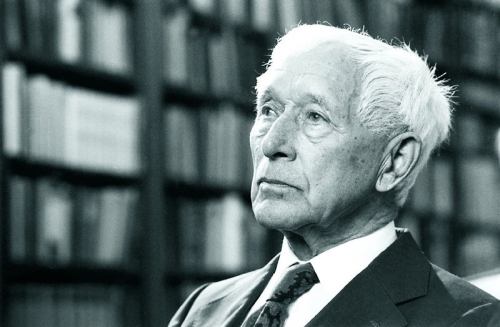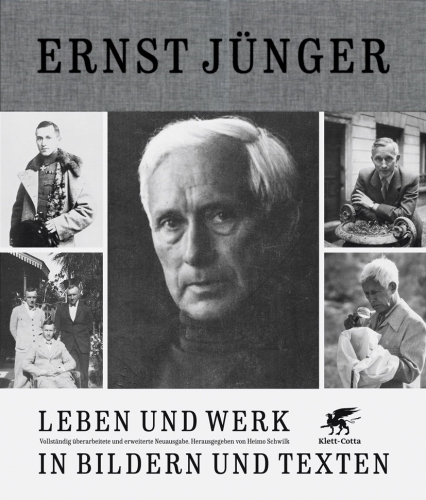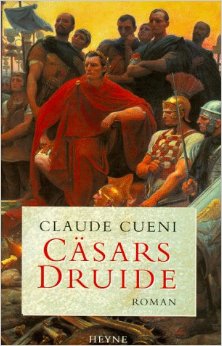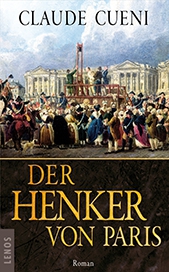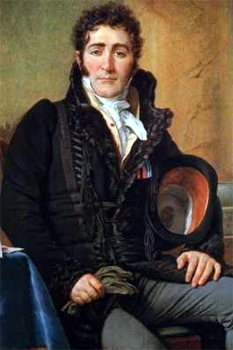 Il serait parfaitement inconséquent de restreindre le dandysme – né en Angleterre au XVIIe siècle et dont l’âge d’or pourrait se situer entre les XVIIIe et XIXe siècles – à une simple mode vestimentaire maniériste reconnue pour sa préciosité. Bien plus, il faut y voir l’expression d’une identité paradoxale, d’un attribut psychologique. Entre vice et vertu, grandeur aristocratique et décrépitude, la singulière ambivalence du dandy promet un portrait riche en enseignements.
Il serait parfaitement inconséquent de restreindre le dandysme – né en Angleterre au XVIIe siècle et dont l’âge d’or pourrait se situer entre les XVIIIe et XIXe siècles – à une simple mode vestimentaire maniériste reconnue pour sa préciosité. Bien plus, il faut y voir l’expression d’une identité paradoxale, d’un attribut psychologique. Entre vice et vertu, grandeur aristocratique et décrépitude, la singulière ambivalence du dandy promet un portrait riche en enseignements.
Le dandysme ramasse, selon le mot d’Oscar Wilde, « toute la passion romantique et toute la perfection de l’esprit grec » au service d’une « grandeur sans convictions » pour reprendre le très élégant titre d’un Essai sur le dandysme écrit par Marie-Christine Natta. Il y a, en effet, de la grandeur chez le dandy, de la noblesse d’âme, le sens de la distinction et la culture de l’excellence : une sonorité aristocratique vibrante. Si le dandysme a effectivement vu le jour sous la restauration de la monarchie anglaise, sa matrice procède d’une dilection plus ou moins palpable, à cette époque, pour les mœurs française (en rupture avec le puritanisme), et particulièrement pour l’aspect frivole d’une noblesse de cour délaissant la dévotion, autrement plus grave, d’une certaine noblesse de robe. Pourtant, le dandy est grave également, d’une gravité presque cénobitique aux relents tragiques.
Chez George Brummell – père des dandys – la coquetterie s’impose sans rémission mais, aussi et surtout, sans se fourvoyer dans l’excentricité. L’excentrique est bien trop outré pour satisfaire cette légèreté mêlée d’aplomb propre au dandy anglais. « pour être bien mis, il ne faut pas être remarqué », voici en quelques mots « l’axiome de toilette » brummellien. L’élégance n’est pas autre chose que l’art de la discrétion. Il faut se faire remarquer, se distinguer par son originalité vestimentaire et verbale, sans trop bousculer l’ordre établi. En effet le dandy, à l’inverse de l’excentrique, défie la règle (le communément admis) sans jamais l’outrepasser ; son oisiveté n’a pas d’autre fond qu’une promotion de l’indépendance : « absorbé par le culte de lui-même, il n’a rien à donner et rien à recevoir » (Marie-Christine Natta). S’il a besoin des autres par vanité, il ne peut réellement les aimer par crainte d’une dépendance affective, et le travail bourgeois l’obligerait à courber l’échine devant la crasse utilitaire – chose douloureuse pour qui a fait de sa vie une œuvre d’art, autrement dit l’éloge de l’inutile.
Barbey d’Aurevilly insiste lui aussi sur ce culte de l’indépendance qu’il relève chez le beau Brummell : « son indolence ne lui permettait pas d’avoir de la verve, parce qu’avoir de la verve, c’est se passionner ; se passionner, c’est tenir à quelque chose, et tenir à quelque chose, c’est se montrer inférieur » (en effet, Brummell préférait conserver la distance par le mordant du « trait d’esprit »). Il s’ensuit assez logiquement un mépris de l’argent dans sa conception bourgeoise, à savoir celle d’une vie assise sur le confort matériel et moral. Tout au contraire, si le dandy convoite un tel bien c’est uniquement « parce que l’argent est indispensable aux gens qui se font un culte de leurs passions » sans jamais aspirer « à l’argent comme à une chose essentielle ; un crédit indéfini pourrait lui suffire ; il abandonne cette grossière passion aux mortels vulgaires » (Baudelaire, Le peintre et la vie moderne). Il n’est ni un homme d’action, ni un homme de pouvoir ; si il agit « il choisira de préférence les causes perdues » (On pense à Lord Byron dans sa lutte mortelle au côté des insurgés grecs) : « elles ont l’avantage de ne pas rallier les foules » (Marie-Christine Natta). Le dandy aime déplaire, s’évertue à s’éloigner du commun ; non par devoir mais pour plaire davantage en suscitant l’incompréhension.
Au fond, le dandysme nous apparaît comme un « résidu » aristocratique, non seulement en décalage avec l’époque et ses valeurs bourgeoises, mais également déchiré entre la volatilité de ses mœurs et la noblesse de sa prestance. Il se pose, en réalité, comme une réaction déviante de type aristocratique. Réaction déviante en un point fondamental : le remplacement du Bien par le Beau ou le passage d’une distinction assise sur l’excellence éthique à une distinction fondée sur une singularité d’ordre esthétique ; mais réaction également conforme à son origine noble par le rejet massif de la laideur utilitaire et de l’« hédonisme vulgaire », c’est-à-dire un hédonisme qui ne serait pas corrigé par un versant ascétique et impérieux. Illustration d’une grandeur sans conviction, autrement dit d’un esprit aristocratique n’ayant plus que son ego comme objet – réclusion dans la présence intemporelle à soi comme œuvre d’art (en faisant de l’art un moyen d’expression ou d’invention). Toute la particularité du dandy réside dans la grandeur d’une âme en quête de perfectionnement et de rigueur (rigueur sportive pour les dandy anglais comme Lord Seymour ou Byron ; discipline dans l’art de la toilette, dans la perfection plastique poussée à un rare degré d’exigence et dans la création artistique ou littéraire – une esthétique de l’esprit) dissipée par des mœurs déviantes, soit par excès d’austérité, soit par une trop grande légèreté (le libertinage de Byron ou de Wilde par exemple, la chasteté de Baudelaire, les dettes de jeu et les excès de boissons alcoolisées chez Brummell, etc). En somme, il s’agit d’une « forme dégradée de l’ascèse ». Le dandy recrée la soumission à partir de lui-même sous les traits incertains d’une transcendance déchue au service de l’artifice. Une grandeur sans conviction : une hauteur sans Dieu ou la hauteur toute relative de l’homme-Dieu. Le but du dandy, nous dit Camus, « n’était alors que d’égaler Dieu, et de se maintenir à son niveau » ; « l’art est sa morale ».
Aussi est-il souvent perméable à la contagion vertigineuse des sentiments – esquisse du caractère douloureusement vulnérable de l’homme reclus. Stoïque, il ne connaît pas la reddition d’un moi presque déifié ; il est beau d’une beauté crépusculaire, celle de l’astre déclinant, « superbe, sans chaleur et plein de mélancolie » selon l’émouvante expression de Baudelaire (Le peintre de la vie moderne). La beauté d’une aristocratie tombante ; non pas le déchirement d’un drame mais la grandeur altière d’une certaine forme de résignation tragique : « un dandy peut-être un homme blasé, peut-être un homme souffrant ; mais, dans ce dernier cas, il sourira comme le Lacédémonien sous la morsure du renard ». Un cœur tragique comme celui de la jeune Germaine décrit par Georges Bernanos (Sous le soleil de Satan) : « Tel semblait né pour une vie paisible, qu’un destin tragique attend. Fait surprenant, dit-on, imprévisible… Mais les faits ne sont rien : le tragique était dans son cœur ». Si le dandy est beau c’est parce qu’il est tragique (ou l’inverse) ; aussi, il est seul, mais seul comme personne : il est l’unique à son degré de conscience le plus élevé (et il a pourtant encore besoin des autres pour être admiré – comme on admire une belle sculpture – et satisfaire sa vanité qui toujours suppose une certaine dose d’humilité).
Résignation au culte de soi jusqu’à la mort de soi, jusqu’au mourir blanchotien (aussi paradoxale que cela puisse paraître, une érection de l’ego persiste dans la dépossession de l’absence à soi, dans l’impersonnel ou le neutre de l’ œuvre d’art – comme chez Blanchot, pour qui l’art de l’écriture marque l’instant de sa mort, le dandy, sculpteur d’individualité, s’épuise dans son œuvre : ne participe-t-il pas, pour Sartre, à un « club de suicidés » ?). Le dandysme se définit finalement par cette espèce « de culte de soi-même, qui peut survivre à la recherche du bonheur à trouver dans autrui » ou, pour Daniel Salvatore Schiffer, à travers une « esthétique de la disparition » déclinée sous la plume d’André Glucksmann qui, dans Une rage d’enfant, fait du dandysme «l’assomption narcissique » d’une autodestruction entendue « comme la forme éminente de la coïncidence avec soi : dans un seul et même élan je me fais et je me défais ». L’hypertrophie et la disparition du moi – deux faces oxymoriques d’une même médaille – soulignent une forme de mystique dévoyée et doloriste très éloignée de l’absolu plotinien. « le Bien, nous dit Plotin, est plein de douceur, de bienveillance et de délicatesse. Il est toujours à la disposition de qui le désire. Mais le beau provoque terreur, également, et plaisir mêlé de douleur. Il entraîne loin du Bien ceux qui ne savent pas ce qu’est le Bien, comme l’objet aimé peut entraîner loin du Père ». L’élan passablement mystique du dandy ne délivre pas. Le Beau seul n’est que création (chez le dandy il s’agit d’une ultime création : une création de soi) et donc – malgré les efforts pour s’oublier dans cette création – déréliction. Seul le Bien permet l’abandon ; seul le Bien conduit au renouement originel.
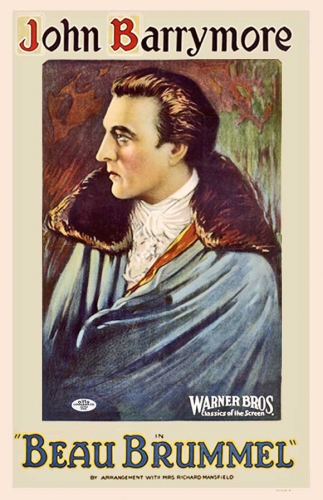 De ce qui précède, nous ne pouvons ignorer la place de choix qu’occupe, au sein du dandysme, la sensibilité romantique – Albert Camus ne s’y est pas trompé lorsqu’il fait du dandy un « héros romantique ». Dandysme et beylisme s’accorde majestueusement. D’après Léon Blum « nous trouvons (…) au fond du beylisme ce qui peut-être l’essence de la sensibilité romantique : la persistance vers un but qui, d’avance, est connu comme intangible, l’acharnement vers un idéal, c’est-à-dire vers l’impossible, la dépense consciente de soi-même en pure perte, sans espoir quelconque de récompense ou de retour. Car les âmes assez exigeantes pour aspirer à ce bonheur parfait, ou même surhumain, le sont trop pour accepter en échange les compensations atténuées qui font le lot commun des hommes. La mélancolie romantique est issue de ces thèmes élémentaires : les seuls bonheurs accessibles à l’homme font sa bassesse ; sa noblesse fait sa souffrance ; une fatalité maligne a posé devant lui ce dilemme : la vulgarité innocente qui le ravale à la brute, l’aspiration anxieuse et condamnée qui le hausse vers un ciel inaccessible… ». Cette jolie citation nous rappelle que l’esthétique de soi dévoile un thème propre à la fois au dandysme et au romantisme (Stendhal, Byron et surtout Baudelaire symbolisent la fusion parfaite de ces deux aspects). Qui a mieux exalté que Baudelaire la friction permanente entre le don de soi dans l’art poétique et la transpiration mélancolique ? L’auteur des Fleurs du mal pour qui « le malheur est à la fois une noble distinction et un critère esthétique » (Marie-Christine Natta) a écrit ces mots extraordinaires dans sa lettre à jules Janin : « Vous êtes un homme heureux. Je vous plains, monsieur, d’être si facilement heureux. Faut-il croire qu’un homme soit tombé bas pour se croire heureux ! (…) Je vous plains, et j’estime ma mauvaise humeur plus distinguée que votre béatitude » ; ou encore dans Fusée : « je ne prétends pas que la Joie ne puisse pas s’associer à la Beauté, mais je dis que la Joie (en) est un des ornements les plus vulgaires ; – tandis que la Mélancolie en est pour ainsi dire l’illustre compagne, à ce point que je ne conçois guère (mon cerveau serait-il un miroir ensorcelé ?) un type de Beauté où il n’y ait du Malheur ».
De ce qui précède, nous ne pouvons ignorer la place de choix qu’occupe, au sein du dandysme, la sensibilité romantique – Albert Camus ne s’y est pas trompé lorsqu’il fait du dandy un « héros romantique ». Dandysme et beylisme s’accorde majestueusement. D’après Léon Blum « nous trouvons (…) au fond du beylisme ce qui peut-être l’essence de la sensibilité romantique : la persistance vers un but qui, d’avance, est connu comme intangible, l’acharnement vers un idéal, c’est-à-dire vers l’impossible, la dépense consciente de soi-même en pure perte, sans espoir quelconque de récompense ou de retour. Car les âmes assez exigeantes pour aspirer à ce bonheur parfait, ou même surhumain, le sont trop pour accepter en échange les compensations atténuées qui font le lot commun des hommes. La mélancolie romantique est issue de ces thèmes élémentaires : les seuls bonheurs accessibles à l’homme font sa bassesse ; sa noblesse fait sa souffrance ; une fatalité maligne a posé devant lui ce dilemme : la vulgarité innocente qui le ravale à la brute, l’aspiration anxieuse et condamnée qui le hausse vers un ciel inaccessible… ». Cette jolie citation nous rappelle que l’esthétique de soi dévoile un thème propre à la fois au dandysme et au romantisme (Stendhal, Byron et surtout Baudelaire symbolisent la fusion parfaite de ces deux aspects). Qui a mieux exalté que Baudelaire la friction permanente entre le don de soi dans l’art poétique et la transpiration mélancolique ? L’auteur des Fleurs du mal pour qui « le malheur est à la fois une noble distinction et un critère esthétique » (Marie-Christine Natta) a écrit ces mots extraordinaires dans sa lettre à jules Janin : « Vous êtes un homme heureux. Je vous plains, monsieur, d’être si facilement heureux. Faut-il croire qu’un homme soit tombé bas pour se croire heureux ! (…) Je vous plains, et j’estime ma mauvaise humeur plus distinguée que votre béatitude » ; ou encore dans Fusée : « je ne prétends pas que la Joie ne puisse pas s’associer à la Beauté, mais je dis que la Joie (en) est un des ornements les plus vulgaires ; – tandis que la Mélancolie en est pour ainsi dire l’illustre compagne, à ce point que je ne conçois guère (mon cerveau serait-il un miroir ensorcelé ?) un type de Beauté où il n’y ait du Malheur ».
Il faut ici souligner à quel point la rhétorique baudelairienne du clair-obscur explore admirablement ce mélange inextricable de bien et de mal chez le dandy – signe irrévocable d’une primauté, déjà soulignée, du Beau sur le Bien – et saisit avec justesse son élan décadent. « Le dandysme apparaît surtout aux époques transitoires où la démocratie n’est que partiellement chancelante et avilie ». Baudelaire ajoute ensuite : « dans le trouble de ces époques quelques hommes déclassés, dégoûtés, désœuvrés, mais tous riches de force native, peuvent concevoir le projet de fonder une espèce nouvelle d’aristocratie (…) le dandysme est le dernier éclat d’héroïsme dans les décadences ». Nous voyons ici que la décadence, contrairement à une certaine idée de la médiocrité, suppose un dernier éclat ou les vestiges d’une grandeur irréconciliable – du moins dans ses anciennes formes – avec les changements d’un nouveau monde en construction. Les époques de transition (et le XIXe siècle en est une) offrent une sensibilité remarquable à l’idée de décadence. Aussi, à cette période transitoire de notre histoire (XIXe siècle), la fièvre émancipatrice n’a pas encore transformée la tolérance en demande de reconnaissance dont le moteur est évidemment ce désir exécrable d’indistinction porté par les passions relativistes (relativisme qui, par ailleurs, ne s’étend plus aux ennemis du relativisme quant à eux sévèrement jugés). Cette tolérance mal comprise, ou consciencieusement niée au profit de la reconnaissance, se déroule ainsi : je ne souhaite plus seulement que ma différence soit tolérée mais reconnue, c’est-à-dire, précisément, niée en tant que différence, mise à égalité, noyée dans l’indistinction.
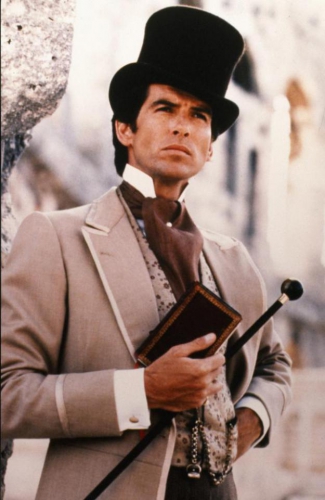 Ce court détour pour rappeler que le dandysme, comme l’a aussi montré Camus, évolue sur le mode de la révolte et non de la révolution. Sartre, dans son Baudelaire, expose le sens de cette nuance : « le révolutionnaire veut changer le monde, il le dépasse vers l’avenir, vers un ordre de valeur qu’il invente ; le révolté à soin de maintenir intacts les abus dont il souffre pour pouvoir se révolter contre eux (…) Il ne veut ni détruire ni dépasser, mais seulement se dresser contre l’ordre. Plus il l’attaque, plus il le respecte obscurément ». Si le dandy a pu pénétrer les milieux aristocratiques les mieux conservés de son temps sans éveiller le moindre rejet (Brummell, par exemple, était membre du cercle du prince George), c’est parce qu’il a su, à la fois, embellir ses déviances et, surtout, ne jamais les revendiquer comme un modèle à suivre : il n’a jamais agité son droit à la reconnaissance et s’est toujours contenté d’une franche indépendance (liberté de de rien vouloir et, par conséquent, de ne rien demander). Le dandy possède cette faculté de transformer un « crime » en vice, une déviance difficilement tolérable (à tort ou à raison) en une fantaisie séduisante ; sa force fut, à la fois, de greffer son cortège de vices sur une nature exceptionnellement distinguée (par son degré d’exigence plastique, intellectuelle et artistique) mais aussi de se maintenir à distance du pouvoir et des revendications politiques, loin, très loin, des lumières criardes de l’ostension révolutionnaire. Peut-être faudrait-il veiller à ne pas oublier cette citation de Benjamin Disraeli : « ce qui est un crime pour le grand nombre n’est qu’un vice pour quelques-uns ». Compte tenu de la nature pécheresse de l’homme, l’harmonie sociale est à ce prix.
Ce court détour pour rappeler que le dandysme, comme l’a aussi montré Camus, évolue sur le mode de la révolte et non de la révolution. Sartre, dans son Baudelaire, expose le sens de cette nuance : « le révolutionnaire veut changer le monde, il le dépasse vers l’avenir, vers un ordre de valeur qu’il invente ; le révolté à soin de maintenir intacts les abus dont il souffre pour pouvoir se révolter contre eux (…) Il ne veut ni détruire ni dépasser, mais seulement se dresser contre l’ordre. Plus il l’attaque, plus il le respecte obscurément ». Si le dandy a pu pénétrer les milieux aristocratiques les mieux conservés de son temps sans éveiller le moindre rejet (Brummell, par exemple, était membre du cercle du prince George), c’est parce qu’il a su, à la fois, embellir ses déviances et, surtout, ne jamais les revendiquer comme un modèle à suivre : il n’a jamais agité son droit à la reconnaissance et s’est toujours contenté d’une franche indépendance (liberté de de rien vouloir et, par conséquent, de ne rien demander). Le dandy possède cette faculté de transformer un « crime » en vice, une déviance difficilement tolérable (à tort ou à raison) en une fantaisie séduisante ; sa force fut, à la fois, de greffer son cortège de vices sur une nature exceptionnellement distinguée (par son degré d’exigence plastique, intellectuelle et artistique) mais aussi de se maintenir à distance du pouvoir et des revendications politiques, loin, très loin, des lumières criardes de l’ostension révolutionnaire. Peut-être faudrait-il veiller à ne pas oublier cette citation de Benjamin Disraeli : « ce qui est un crime pour le grand nombre n’est qu’un vice pour quelques-uns ». Compte tenu de la nature pécheresse de l’homme, l’harmonie sociale est à ce prix.



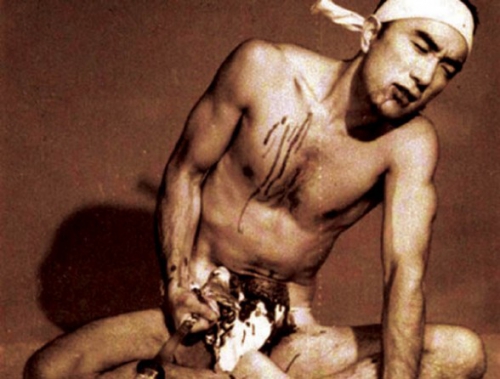



 del.icio.us
del.icio.us
 Digg
Digg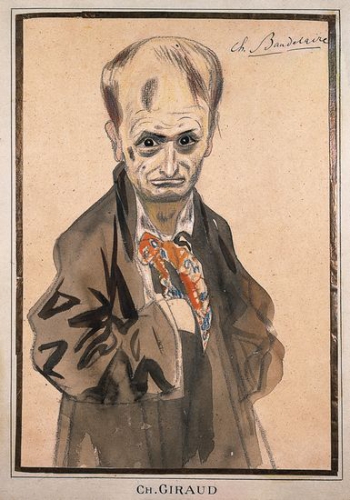 La politique avant tout, disait Maurras. Parlons plutôt, comme Baudelaire, d’antipolitisme. On sait que le poète, porté, en 1848, par un enthousiasme juvénile, avait participé physiquement aux événements révolutionnaires, appelant même, sans doute pour des raisons peu nobles, à fusiller son beau-père, le général Aupick. Cependant, face à la niaiserie des humanitaristes socialistes, à la suite de la sanglante répression, en juin, de l’insurrection ouvrière (il gardera toujours une tendresse de catholique pour le Pauvre, le Travailleur, et il fut un admirateur du poète et chansonnier populiste Pierre Dupont), et devant le cynisme bourgeois (Cavaignac, le bourreau des insurgés, fut toujours un républicain de gauche), il éprouva et manifesta un violent dégoût pour le monde politique, sa réalité, sa logique, ses mascarades, sa bêtise, qu’il identifiait, comme son contemporain Gustave Flaubert, au monde de la démocratie, du progrès, de la modernité. Ce dégoût est exprimé rudement dans ses brouillons très expressifs, aussi déroutants et puissants que les Pensées de Pascal, Mon cœur mis à nu, et les Fusées, qui appartiennent à ce genre d’écrits littéraires qui rendent presque sûrement intelligent, pour peu qu’on échappe à l’indignation bien pensante.
La politique avant tout, disait Maurras. Parlons plutôt, comme Baudelaire, d’antipolitisme. On sait que le poète, porté, en 1848, par un enthousiasme juvénile, avait participé physiquement aux événements révolutionnaires, appelant même, sans doute pour des raisons peu nobles, à fusiller son beau-père, le général Aupick. Cependant, face à la niaiserie des humanitaristes socialistes, à la suite de la sanglante répression, en juin, de l’insurrection ouvrière (il gardera toujours une tendresse de catholique pour le Pauvre, le Travailleur, et il fut un admirateur du poète et chansonnier populiste Pierre Dupont), et devant le cynisme bourgeois (Cavaignac, le bourreau des insurgés, fut toujours un républicain de gauche), il éprouva et manifesta un violent dégoût pour le monde politique, sa réalité, sa logique, ses mascarades, sa bêtise, qu’il identifiait, comme son contemporain Gustave Flaubert, au monde de la démocratie, du progrès, de la modernité. Ce dégoût est exprimé rudement dans ses brouillons très expressifs, aussi déroutants et puissants que les Pensées de Pascal, Mon cœur mis à nu, et les Fusées, qui appartiennent à ce genre d’écrits littéraires qui rendent presque sûrement intelligent, pour peu qu’on échappe à l’indignation bien pensante.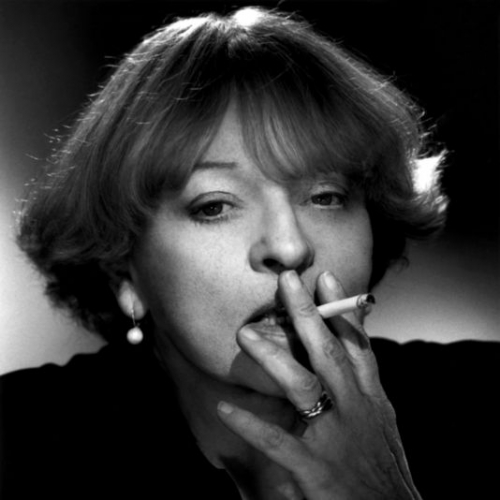
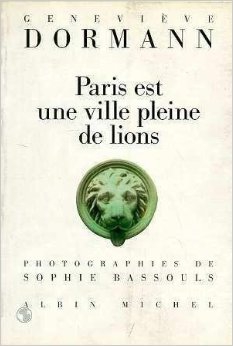 En 1975, avec Robert Aron, Thierry Maulnier, Roger Bésus, Dominique Jamet et Claude Joubert, elle cosigne une lettre au Monde, où elle s'insurge de l'article d'un universitaire faisant profession d'« aller cracher sur [la] tombe » de Robert Brasillach.
En 1975, avec Robert Aron, Thierry Maulnier, Roger Bésus, Dominique Jamet et Claude Joubert, elle cosigne une lettre au Monde, où elle s'insurge de l'article d'un universitaire faisant profession d'« aller cracher sur [la] tombe » de Robert Brasillach.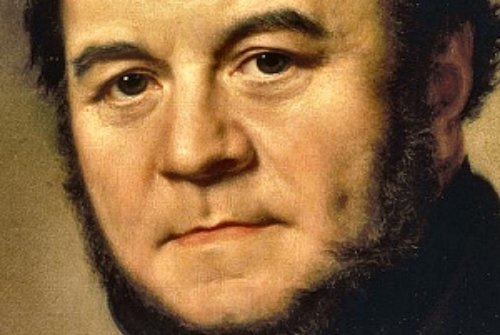
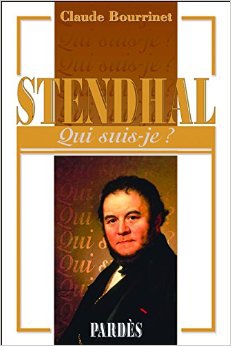 Collaborateur régulier aux sites dissidents Europe Maxima, Euro-Synergies et Synthèse nationale, Claude Bourrinet est un penseur impertinent. C’est aussi un remarquable biographe. Vient de paraître sous sa signature un excellent Stendhal dans la collection « Qui suis-je ? ».
Collaborateur régulier aux sites dissidents Europe Maxima, Euro-Synergies et Synthèse nationale, Claude Bourrinet est un penseur impertinent. C’est aussi un remarquable biographe. Vient de paraître sous sa signature un excellent Stendhal dans la collection « Qui suis-je ? ».
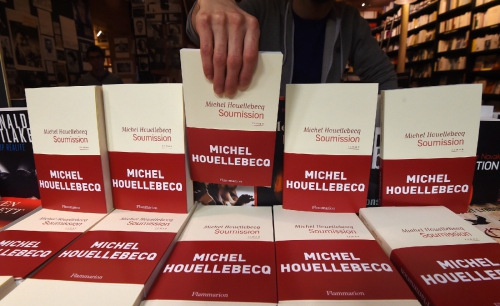
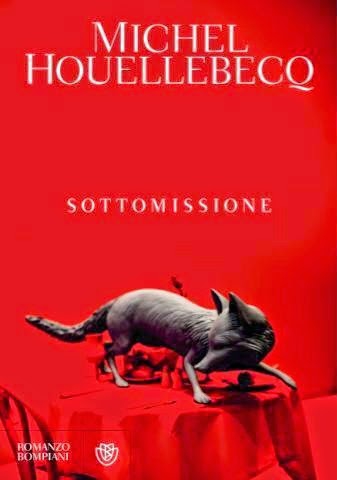 This kind of argument, even if it is part of a dialectic, can only be very troubling for Identitarians, who incidentally are portrayed in the book as wanting “Race war now!” while we are still the overwhelming majority in mother Europa. This is not an irrational attitude if a war must occur: there is no question that we grow demographically weaker with every generation in the face of the fatal triad of sub-replacement fertility, displacement-level immigration, and miscegenation.
This kind of argument, even if it is part of a dialectic, can only be very troubling for Identitarians, who incidentally are portrayed in the book as wanting “Race war now!” while we are still the overwhelming majority in mother Europa. This is not an irrational attitude if a war must occur: there is no question that we grow demographically weaker with every generation in the face of the fatal triad of sub-replacement fertility, displacement-level immigration, and miscegenation.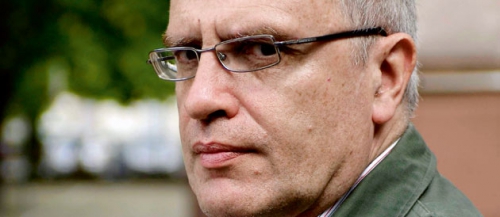
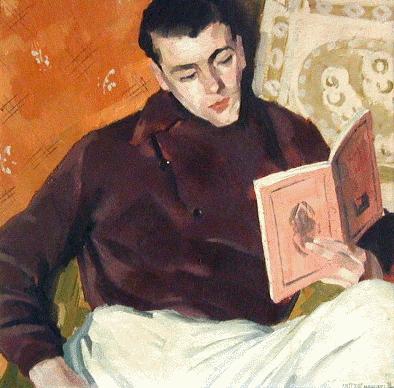
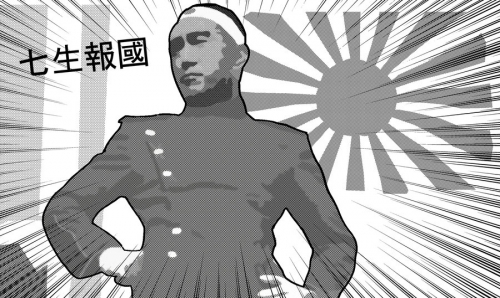
 Mishima, nato nel 1925, era molto giovane durante la Seconda Guerra Mondiale ma poté partecipare all’ultimo anno di guerra; era scusato. All’epoca deve esser stato ossessionato dall'”uomo d’acciaio”, perché il suo amico Hasuda, collega scrittore, afferma: “Credo che si debba morire giovani, alla sua età”. Hasuda fu fedele alla parola, perché si suicidò. Sembra che l’omosessualità possa anche aver tormentato Mishima, poiché in Confessioni di una maschera (1949) si occupa di emozioni interiori e passioni. Tuttavia, se Mishima conosceva bene la storia di molti samurai, allora avrebbe creduto che l’omosessualità fosse la forma più pura di sesso. Inoltre, molti leader del Giappone nel periodo pre-Edo ed Edo ebbero concubini maschi. Pertanto, Mishima si vergognò dell’etica cristiana arrivata in Giappone con la Restaurazione Meiji (1868)? Se no, allora molti “uomini d’acciaio” del vecchio Giappone ebbero relazioni omosessuali e questo andava inteso alla luce della realtà. Dopo tutto, la lealtà nel vecchio Giappone era per il sovrano daimyo e i compagni samurai. Pertanto, la compassione era ritenuta cosa per deboli, a causa della natura della vita. Non sorprende che forti legami maschili prendessero piede nella psiche dei samurai e tale realtà culturale sia all’opposto dell’immagine dell’omosessualità nel Giappone moderno, percepita per deboli. Il Wakashudo aveva diversi modi di avviare i ragazzi nel “vecchio Giappone” e nella mentalità dei samurai, le donne venivano viste femminilizzare gli uomini indebolendone lo spirito. Il sistema Wakashudo fu spesso abusato dal clero buddista per proprie gratificazioni sessuali, in passato. Tuttavia, il sistema dei samurai si basava sulla creazione di “un processo di apprendimento secondo un codice etico” impiantando lealtà e forti legami per cui, in tempi di difficoltà, i samurai rimasero attaccati all’istruzione ricevuta. Mishima, gonfiando i muscoli e dalle competenze marziali ben levigate, divenne l'”uomo d’acciaio”. Tuttavia, fu contaminato dalle pose femminili fusesi nel suo martirio. Posò volentieri di fronte alle telecamere e le immagini di San Sebastiano ucciso da molte frecce o del samurai che invoca il suicidio rituale, giocarono la sua psiche e il suo essere. Il mondo di Mishima era reale e surreale, perché potere e forza si fusero, ma avendo una natura femminile seppellita nell’anima. Mishima dichiarò: “Il tipo più appropriato di vita quotidiana, per me, fu la quotidiana distruzione mondiale; la pace è il più duro e anormale modo di vivere”. Pertanto, il 25 novembre 1970, si avverò ciò che Mishima era divenuto. Tale realtà si basava su visioni suicide, quindi il suo mondo illusorio sfociò in un fine violenta. Tuttavia, la verità di Mishima fu la fine violenta e caotica entro una realtà struttura. Dopo tutto, Mishima stilò dei piani successivi alla morte. Inoltre, Mishima si dedicò per tale giorno da anni, ma ora il tempo della recitazione era finito, in parte, perché ancora si agitava nel mondo dell'”ego”. Nel suo mondo illusorio il “sé” avrebbe agito collettivamente con forza, a sua volta generando “uno spirito” tratto dal sogno di Mishima di morte glorificata. Eppure, non era un soldato, dopo tutto aveva mentito, non avendo combattuto per il Giappone; quindi, la retorica nazionalista fu proprio tale e il 25 novembre fu più una”redenzione personale” che pose fine alla “dualità della sua anima”. L’uomo delle parole sarebbe morto nel “paradiso dell’estremo dolore”, perché l’ultima sciabolata che lo decapitò non fu netta, furono necessari diversi tentativi. Dopo tutto, non era un soldato, non era un samurai e lo non erano neanche i suoi fedeli seguaci. L’atto finale è la prova che i “sognatori” sono proprio ciò; quindi, il finale non fu una bella immagine di serenità, ma una scena “infernale stupida e di follia autoindotta”. Il mondo illusorio di Mishima non poteva cambiare nulla, perché non riusciva a riscrivere la storia. Sì, dopo di lui si poté riscrivere la storia e forse questa era cui Mishima anelava?
Mishima, nato nel 1925, era molto giovane durante la Seconda Guerra Mondiale ma poté partecipare all’ultimo anno di guerra; era scusato. All’epoca deve esser stato ossessionato dall'”uomo d’acciaio”, perché il suo amico Hasuda, collega scrittore, afferma: “Credo che si debba morire giovani, alla sua età”. Hasuda fu fedele alla parola, perché si suicidò. Sembra che l’omosessualità possa anche aver tormentato Mishima, poiché in Confessioni di una maschera (1949) si occupa di emozioni interiori e passioni. Tuttavia, se Mishima conosceva bene la storia di molti samurai, allora avrebbe creduto che l’omosessualità fosse la forma più pura di sesso. Inoltre, molti leader del Giappone nel periodo pre-Edo ed Edo ebbero concubini maschi. Pertanto, Mishima si vergognò dell’etica cristiana arrivata in Giappone con la Restaurazione Meiji (1868)? Se no, allora molti “uomini d’acciaio” del vecchio Giappone ebbero relazioni omosessuali e questo andava inteso alla luce della realtà. Dopo tutto, la lealtà nel vecchio Giappone era per il sovrano daimyo e i compagni samurai. Pertanto, la compassione era ritenuta cosa per deboli, a causa della natura della vita. Non sorprende che forti legami maschili prendessero piede nella psiche dei samurai e tale realtà culturale sia all’opposto dell’immagine dell’omosessualità nel Giappone moderno, percepita per deboli. Il Wakashudo aveva diversi modi di avviare i ragazzi nel “vecchio Giappone” e nella mentalità dei samurai, le donne venivano viste femminilizzare gli uomini indebolendone lo spirito. Il sistema Wakashudo fu spesso abusato dal clero buddista per proprie gratificazioni sessuali, in passato. Tuttavia, il sistema dei samurai si basava sulla creazione di “un processo di apprendimento secondo un codice etico” impiantando lealtà e forti legami per cui, in tempi di difficoltà, i samurai rimasero attaccati all’istruzione ricevuta. Mishima, gonfiando i muscoli e dalle competenze marziali ben levigate, divenne l'”uomo d’acciaio”. Tuttavia, fu contaminato dalle pose femminili fusesi nel suo martirio. Posò volentieri di fronte alle telecamere e le immagini di San Sebastiano ucciso da molte frecce o del samurai che invoca il suicidio rituale, giocarono la sua psiche e il suo essere. Il mondo di Mishima era reale e surreale, perché potere e forza si fusero, ma avendo una natura femminile seppellita nell’anima. Mishima dichiarò: “Il tipo più appropriato di vita quotidiana, per me, fu la quotidiana distruzione mondiale; la pace è il più duro e anormale modo di vivere”. Pertanto, il 25 novembre 1970, si avverò ciò che Mishima era divenuto. Tale realtà si basava su visioni suicide, quindi il suo mondo illusorio sfociò in un fine violenta. Tuttavia, la verità di Mishima fu la fine violenta e caotica entro una realtà struttura. Dopo tutto, Mishima stilò dei piani successivi alla morte. Inoltre, Mishima si dedicò per tale giorno da anni, ma ora il tempo della recitazione era finito, in parte, perché ancora si agitava nel mondo dell'”ego”. Nel suo mondo illusorio il “sé” avrebbe agito collettivamente con forza, a sua volta generando “uno spirito” tratto dal sogno di Mishima di morte glorificata. Eppure, non era un soldato, dopo tutto aveva mentito, non avendo combattuto per il Giappone; quindi, la retorica nazionalista fu proprio tale e il 25 novembre fu più una”redenzione personale” che pose fine alla “dualità della sua anima”. L’uomo delle parole sarebbe morto nel “paradiso dell’estremo dolore”, perché l’ultima sciabolata che lo decapitò non fu netta, furono necessari diversi tentativi. Dopo tutto, non era un soldato, non era un samurai e lo non erano neanche i suoi fedeli seguaci. L’atto finale è la prova che i “sognatori” sono proprio ciò; quindi, il finale non fu una bella immagine di serenità, ma una scena “infernale stupida e di follia autoindotta”. Il mondo illusorio di Mishima non poteva cambiare nulla, perché non riusciva a riscrivere la storia. Sì, dopo di lui si poté riscrivere la storia e forse questa era cui Mishima anelava?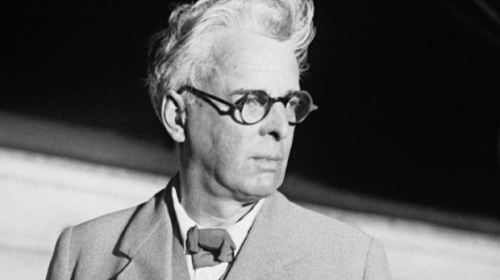
![william-butler-yeats-by-reemerv[162091].jpg](http://euro-synergies.hautetfort.com/media/01/02/2740805010.jpg) The falcon is modern man. The motive force of the falcon’s flight is human desire, pride, spiritedness, and Faustian striving. The spiral structure of the flight is the intelligible measure–the moderation and moralization of human desire and action–imposed by the moral center of our civilization, represented by the falconer, the falcon’s master, our master, which I interpret in Nietzschean terms as the highest values of our culture. The tether that holds us to the center and allows it to impose measure on our flight is the “voice of God,” i.e., the claim of the values of our civilization upon us; the ability of our civilization’s values to move us.
The falcon is modern man. The motive force of the falcon’s flight is human desire, pride, spiritedness, and Faustian striving. The spiral structure of the flight is the intelligible measure–the moderation and moralization of human desire and action–imposed by the moral center of our civilization, represented by the falconer, the falcon’s master, our master, which I interpret in Nietzschean terms as the highest values of our culture. The tether that holds us to the center and allows it to impose measure on our flight is the “voice of God,” i.e., the claim of the values of our civilization upon us; the ability of our civilization’s values to move us.
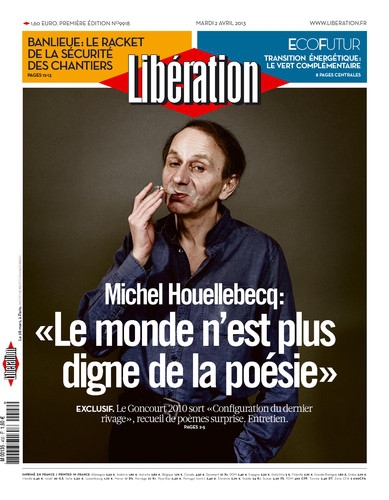 Tout le paradoxe de la France de 2022 telle que présentée par Houellebecq réside dans cet affrontement entre le Front national et la Fraternité musulmane, autrement dit entre l’islam et les identitaires. A priori diamétralement opposés, ces deux courants de pensée apparaissent pourtant comme similaires puisqu’ils revendiquent des valeurs comme l’enracinement et la famille. Tous deux entendent répondre au vide laissé par la parenthèse si courte ouverte en 1789, c’est-à-dire à cet « humanisme athée » plein « d’orgueil et d’arrogance » et caractérisé par « l’opposition entre le communisme – disons, la variante hard de l’humanisme – et la démocratie libérale – sa variante molle ». Tous deux entendent œuvrer au retour du spirituel. Le fascinant personnage de Rediger, professeur d’université ayant fréquenté les mouvements identitaires avant de se convertir à l’islam et de devenir finalement ministre, symbolise à lui seul cette aspiration incessante que ni le libéralisme, ni la démocratie, ni l’athéisme ne seront parvenus à éteindre. D’abord convaincu qu’une renaissance de la chrétienté était possible, il comprend finalement que « cette Europe qui était le sommet de la civilisation humaine s’est bel et bien suicidée, en l’espace de quelques décennies » en 1914. Qu’importe alors si le vecteur du renouveau spirituel ne se fait plus au nom des Évangiles mais du Coran. Pourvu que l’essentiel demeure.
Tout le paradoxe de la France de 2022 telle que présentée par Houellebecq réside dans cet affrontement entre le Front national et la Fraternité musulmane, autrement dit entre l’islam et les identitaires. A priori diamétralement opposés, ces deux courants de pensée apparaissent pourtant comme similaires puisqu’ils revendiquent des valeurs comme l’enracinement et la famille. Tous deux entendent répondre au vide laissé par la parenthèse si courte ouverte en 1789, c’est-à-dire à cet « humanisme athée » plein « d’orgueil et d’arrogance » et caractérisé par « l’opposition entre le communisme – disons, la variante hard de l’humanisme – et la démocratie libérale – sa variante molle ». Tous deux entendent œuvrer au retour du spirituel. Le fascinant personnage de Rediger, professeur d’université ayant fréquenté les mouvements identitaires avant de se convertir à l’islam et de devenir finalement ministre, symbolise à lui seul cette aspiration incessante que ni le libéralisme, ni la démocratie, ni l’athéisme ne seront parvenus à éteindre. D’abord convaincu qu’une renaissance de la chrétienté était possible, il comprend finalement que « cette Europe qui était le sommet de la civilisation humaine s’est bel et bien suicidée, en l’espace de quelques décennies » en 1914. Qu’importe alors si le vecteur du renouveau spirituel ne se fait plus au nom des Évangiles mais du Coran. Pourvu que l’essentiel demeure.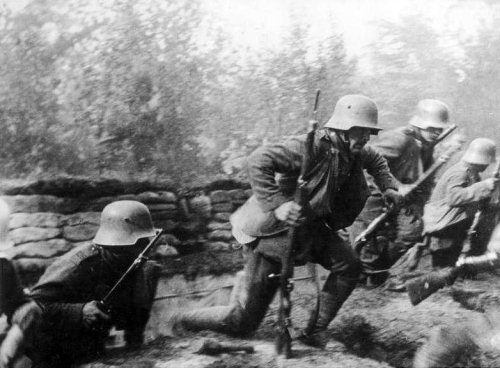

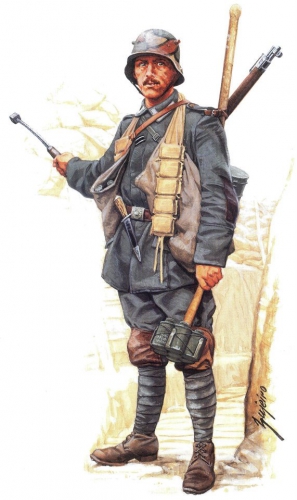 “La battaglia rientra nelle grandi passioni. [...] E’ un canto antico e tremendo, che risale all’alba dell’uomo: nessuno avrebbe mai pensato che fosse ancora così vivo in noi”. In questo scritto di guerra non manca nulla: il sangue, l’orrore, la trincea, l’eros, il coraggio, il fuoco, la paura… Questo per dare un’idea di ciò che aspetta il lettore che abbia il coraggio e la maturità di affrontare quest’opera rovente, che di certo non poteva non piacere ad un giovane nazional-socialista dei tempi. Perché Jünger è stato considerato, e forse è considerato ancora, un nazista. E’ vero che Hitler disse “Jünger non si tocca!” e lo protesse per ben due volte dalle grinfie di Göring che voleva la sua testa. Ma furono il rispetto per il soldato e lo scrittore di guerra che, con tutta probabilità, spinsero il Führer a perdonare a Jünger il suo comportamento. Ci si riferisce al suo antinazismo allegorico, aleggiante nel romanzo Sulle scogliere di marmo, e alla sua parte nella congiura capitanata da Stauffenberg che sfumò nel fallito attentato a Hitler, ben narrato nel film di Bryan Singer Operazione Valchiria. Scrisse un romanzo antinazista e partecipò all’attentato a Hitler, che mirava ad ucciderlo. Anche se in lui l’idea dell’uccisione del tiranno era indicice di mentalità rozza. Queste due cose stanno ben a sottolineare il fantomatico nazismo di cui fu accusato. Ma agli occhi stanchi e superficiali dei molti faciloni, è apparso così per molto tempo. È vero invece che i nazisti trassero, a piene mani, buona parte della loro cultura da alcuni scritti del grande soldato tedesco. Solo in seguito al premio Goethe, ottenuto nell’82, venne riabilitato ufficialmente come scrittore.
“La battaglia rientra nelle grandi passioni. [...] E’ un canto antico e tremendo, che risale all’alba dell’uomo: nessuno avrebbe mai pensato che fosse ancora così vivo in noi”. In questo scritto di guerra non manca nulla: il sangue, l’orrore, la trincea, l’eros, il coraggio, il fuoco, la paura… Questo per dare un’idea di ciò che aspetta il lettore che abbia il coraggio e la maturità di affrontare quest’opera rovente, che di certo non poteva non piacere ad un giovane nazional-socialista dei tempi. Perché Jünger è stato considerato, e forse è considerato ancora, un nazista. E’ vero che Hitler disse “Jünger non si tocca!” e lo protesse per ben due volte dalle grinfie di Göring che voleva la sua testa. Ma furono il rispetto per il soldato e lo scrittore di guerra che, con tutta probabilità, spinsero il Führer a perdonare a Jünger il suo comportamento. Ci si riferisce al suo antinazismo allegorico, aleggiante nel romanzo Sulle scogliere di marmo, e alla sua parte nella congiura capitanata da Stauffenberg che sfumò nel fallito attentato a Hitler, ben narrato nel film di Bryan Singer Operazione Valchiria. Scrisse un romanzo antinazista e partecipò all’attentato a Hitler, che mirava ad ucciderlo. Anche se in lui l’idea dell’uccisione del tiranno era indicice di mentalità rozza. Queste due cose stanno ben a sottolineare il fantomatico nazismo di cui fu accusato. Ma agli occhi stanchi e superficiali dei molti faciloni, è apparso così per molto tempo. È vero invece che i nazisti trassero, a piene mani, buona parte della loro cultura da alcuni scritti del grande soldato tedesco. Solo in seguito al premio Goethe, ottenuto nell’82, venne riabilitato ufficialmente come scrittore.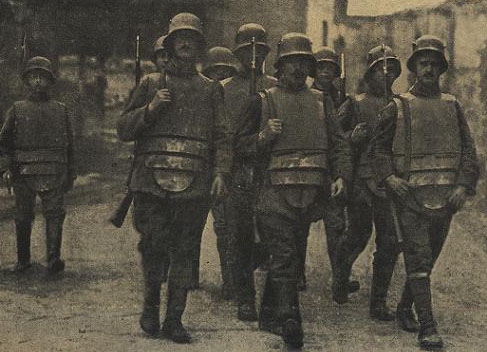

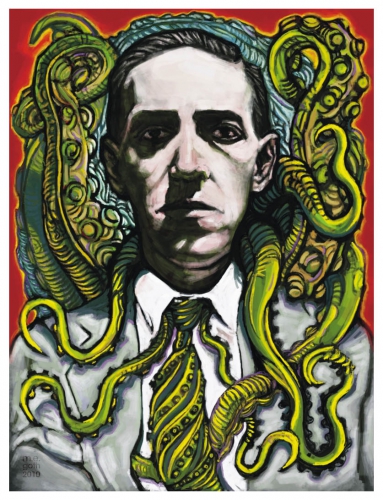
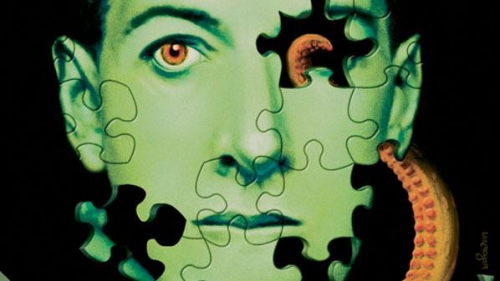
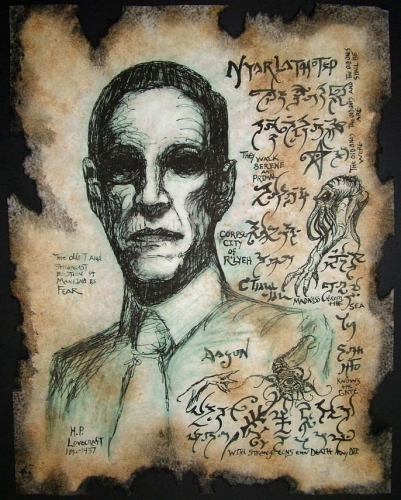
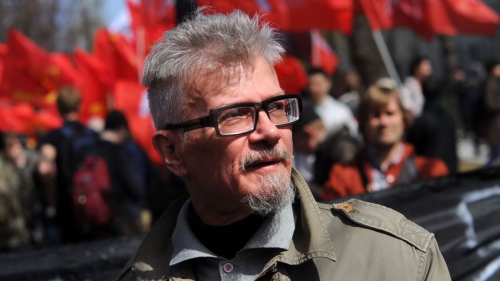
 È stato tutto nella sua vita, Eduard Veniaminovich Savenko, alias Eduard Limonov. Teppista di periferia, giornalista, forse agente del Kgb, mendicante, vagabondo, maggiordomo di un nababbo progressista americano, poeta, scrittore à la page nei salon parigini, dissidente, irresistibile seduttore, cecchino nelle Tigri di Arkan durante la decomposizione della Jugoslavia, leader politico, fondatore del Partito nazional-bolscevico, prima di vederlo sciolto e di creare L’Altra Russia.
È stato tutto nella sua vita, Eduard Veniaminovich Savenko, alias Eduard Limonov. Teppista di periferia, giornalista, forse agente del Kgb, mendicante, vagabondo, maggiordomo di un nababbo progressista americano, poeta, scrittore à la page nei salon parigini, dissidente, irresistibile seduttore, cecchino nelle Tigri di Arkan durante la decomposizione della Jugoslavia, leader politico, fondatore del Partito nazional-bolscevico, prima di vederlo sciolto e di creare L’Altra Russia.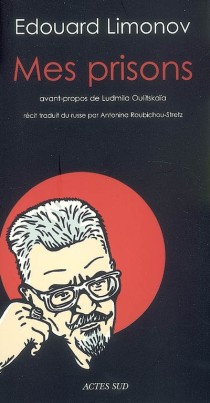
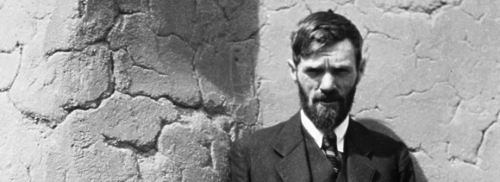
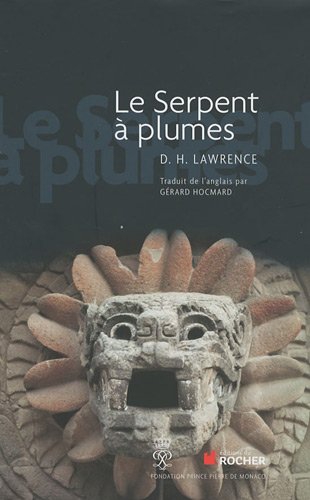 Cette fresque mystico-politique a été écrite dans un village du Nouveau-Mexique en 1925. L’action se passe au Mexique, riche de son passé, mais usé, décadent, vidé de sa substance par les trois grands maux apportés par l’homme blanc, qui sont (selon Lawrence) le Christianisme, l’
Cette fresque mystico-politique a été écrite dans un village du Nouveau-Mexique en 1925. L’action se passe au Mexique, riche de son passé, mais usé, décadent, vidé de sa substance par les trois grands maux apportés par l’homme blanc, qui sont (selon Lawrence) le Christianisme, l’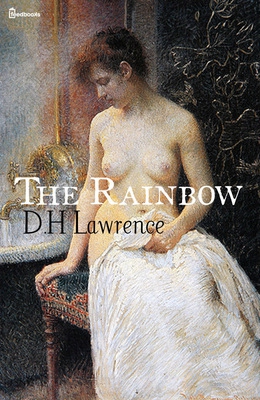 Et le jour venu, c’est sans état d’âme qu’elle accomplira son destin. Une autre nouvelle du même recueil, intitulée Soleil, reprend encore ce thème de la femme mûre insatisfaite de son existence, mais il est traité de manière beaucoup plus pacifique, comme un conte naturiste. Juliette quitte les États-Unis, où elle dépérit, pour le Soleil de la Méditerranée. Là commencera pour elle une nouvelle existence à travers un face à face quotidien avec l’Astre divin (évoquant l’expérience d’Anna de Noailles [4]). Elle s’épanouira enfin sous ses rayons qui harmonisent à la fois le corps et l’âme :
Et le jour venu, c’est sans état d’âme qu’elle accomplira son destin. Une autre nouvelle du même recueil, intitulée Soleil, reprend encore ce thème de la femme mûre insatisfaite de son existence, mais il est traité de manière beaucoup plus pacifique, comme un conte naturiste. Juliette quitte les États-Unis, où elle dépérit, pour le Soleil de la Méditerranée. Là commencera pour elle une nouvelle existence à travers un face à face quotidien avec l’Astre divin (évoquant l’expérience d’Anna de Noailles [4]). Elle s’épanouira enfin sous ses rayons qui harmonisent à la fois le corps et l’âme :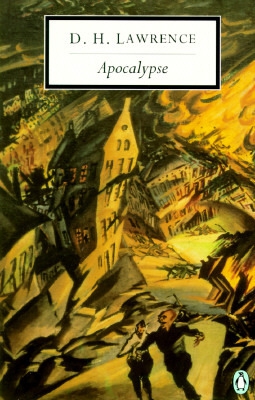 Cette pensée, que Lawrence exprime de manière allégorique dans ses romans et nouvelles, sera explicite dans son dernier ouvrage, paru un an après sa mort, et qui représente son testament spirituel. Apocalypse est l’étude fouillée du texte de Jean de Patmos, qui clôt le Nouveau Testament. Si la notion même d’apocalypse lui répugne, à cause de cet « ignoble désir de fin du monde », Lawrence s’intéresse à cet écrit car il y découvre deux influences opposées. Tout d’abord, le message de ceux qui « ne peuvent même pas supporter l’existence de la Lune et du Soleil », mais par-delà la strate judéo-chrétienne, il y trouve une strate païenne. Car pour faire passer de manière frappante cette vision apocalyptique, le ou les auteurs ont eu recours à un langage, à une symbolique cosmiques, donc païens (5). L’étude de l’Apocalypse est ainsi pour Lawrence prétexte à comparer entre elles ces deux conceptions du monde antagonistes :
Cette pensée, que Lawrence exprime de manière allégorique dans ses romans et nouvelles, sera explicite dans son dernier ouvrage, paru un an après sa mort, et qui représente son testament spirituel. Apocalypse est l’étude fouillée du texte de Jean de Patmos, qui clôt le Nouveau Testament. Si la notion même d’apocalypse lui répugne, à cause de cet « ignoble désir de fin du monde », Lawrence s’intéresse à cet écrit car il y découvre deux influences opposées. Tout d’abord, le message de ceux qui « ne peuvent même pas supporter l’existence de la Lune et du Soleil », mais par-delà la strate judéo-chrétienne, il y trouve une strate païenne. Car pour faire passer de manière frappante cette vision apocalyptique, le ou les auteurs ont eu recours à un langage, à une symbolique cosmiques, donc païens (5). L’étude de l’Apocalypse est ainsi pour Lawrence prétexte à comparer entre elles ces deux conceptions du monde antagonistes : 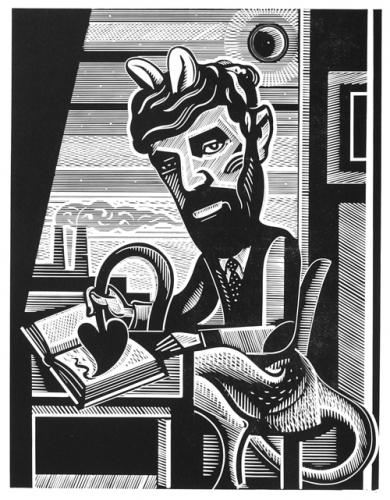

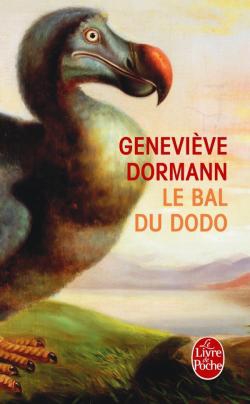 Mais dites-moi, elle n’était pas un peu insolente, Geneviève Dormann ? Un peu insolente, vous plaisantez ? Elle était l’insolence en personne. Elle toisait du même regard bleu comme l’acier à la fois froid et rigolard, elle méprisait et elle bravait avec la même assurance, elle rejetait avec le même haussement d’épaule les bienséances, les conventions, les ridicules, les hiérarchies, les lâches, les complaisants, les décorations, les promotions, les récompenses, le politiquement correct et la pensée inique, le qu’en-dira-t-on, le qu’en-pensera-t-on. Elle était libre, Max, dans sa vie privée comme dans ses propos publics, dans ses jugements, dans ses indulgences comme dans ses éreintements, elle assumait avec une imperturbable assurance ses partis pris, et était prête à se faire hacher menu pour ceux qu’elle aimait comme à mordre jusqu’à les déchiqueter ceux dont la tête ou le comportement ne lui revenaient pas. Fidèle comme un dogue, féroce comme un pitbull, elle était la première à rire du surnom de « Dobermann » que lui avaient valu ses excès de franchise et de pugnacité. Ses ennemis, nombreux (je me souviens que nous étions tombés d’accord pour voir dans le proverbe espagnol « Beaucoup d’ennemis, beaucoup d’honneur » la plus belle devise dont puisse s’orner le blason d’un journaliste ou d’un écrivain), ne mettaient systématiquement en avant son caractère bien trempé que pour n’avoir pas à reconnaître le talent qu’elle avait mis dans les romans où elle laissait caracoler sa plume allègre et désinvolte, à la hussarde. C’était une cavale sauvage.
Mais dites-moi, elle n’était pas un peu insolente, Geneviève Dormann ? Un peu insolente, vous plaisantez ? Elle était l’insolence en personne. Elle toisait du même regard bleu comme l’acier à la fois froid et rigolard, elle méprisait et elle bravait avec la même assurance, elle rejetait avec le même haussement d’épaule les bienséances, les conventions, les ridicules, les hiérarchies, les lâches, les complaisants, les décorations, les promotions, les récompenses, le politiquement correct et la pensée inique, le qu’en-dira-t-on, le qu’en-pensera-t-on. Elle était libre, Max, dans sa vie privée comme dans ses propos publics, dans ses jugements, dans ses indulgences comme dans ses éreintements, elle assumait avec une imperturbable assurance ses partis pris, et était prête à se faire hacher menu pour ceux qu’elle aimait comme à mordre jusqu’à les déchiqueter ceux dont la tête ou le comportement ne lui revenaient pas. Fidèle comme un dogue, féroce comme un pitbull, elle était la première à rire du surnom de « Dobermann » que lui avaient valu ses excès de franchise et de pugnacité. Ses ennemis, nombreux (je me souviens que nous étions tombés d’accord pour voir dans le proverbe espagnol « Beaucoup d’ennemis, beaucoup d’honneur » la plus belle devise dont puisse s’orner le blason d’un journaliste ou d’un écrivain), ne mettaient systématiquement en avant son caractère bien trempé que pour n’avoir pas à reconnaître le talent qu’elle avait mis dans les romans où elle laissait caracoler sa plume allègre et désinvolte, à la hussarde. C’était une cavale sauvage.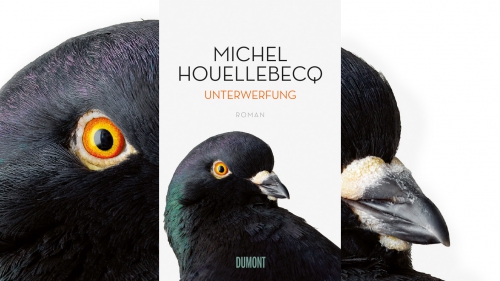

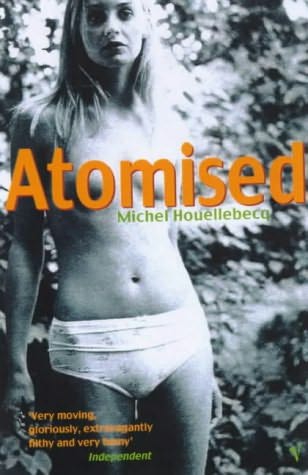 The book (translated into English as Atomized) tells us about the life of famous biologist Michel Djersinski, who mysteriously disappears in the twenty-first century after having plotted the path to a new level of human consciousness. Djersinski’s world i
The book (translated into English as Atomized) tells us about the life of famous biologist Michel Djersinski, who mysteriously disappears in the twenty-first century after having plotted the path to a new level of human consciousness. Djersinski’s world i

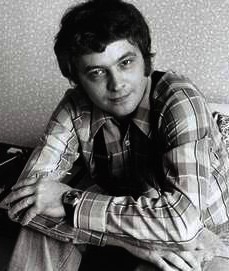 À quelques années de distances, tous les deux sont nés un 19 décembre. L’un s’appelait Jean-Patrick Manchette. Il avait commencé comme traducteur de polars américains. Pour l’état civil, l’autre était Alain Fournier, un nom un peu difficile à porter quand on veut faire carrière en littérature. Il choisit donc un pseudonyme qui avait le mérite de la nouveauté : ADG. Ces initiales ne voulaient strictement rien dire, mais elles étaient faciles à mémoriser.
À quelques années de distances, tous les deux sont nés un 19 décembre. L’un s’appelait Jean-Patrick Manchette. Il avait commencé comme traducteur de polars américains. Pour l’état civil, l’autre était Alain Fournier, un nom un peu difficile à porter quand on veut faire carrière en littérature. Il choisit donc un pseudonyme qui avait le mérite de la nouveauté : ADG. Ces initiales ne voulaient strictement rien dire, mais elles étaient faciles à mémoriser.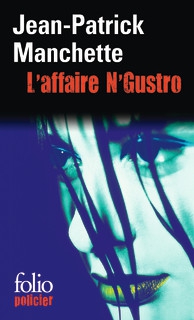 Né en 1942, mort en 1996, Jean-Patrick Manchette publia en 1971 L’affaire N’Gustro directement inspirée de l’affaire Ben Barka (opposant marocain enlevé et liquidé en 1965 avec la complicité active du pouvoir et des basses polices). Sa connaissance des milieux gauchistes de sa folle jeunesse accoucha d’un tableau véridique et impitoyable. Féministes freudiennes et nymphos, intellos débiles et militants paumés. Une galerie complète des laissés pour compte de Mai 68, auxquels Manchette ajoutait quelques portraits hilarants de révolutionnaires tropicaux. Le personnage le moins antipathique était le tueur, ancien de l’OAS, qui se foutait complètement des fantasmes de ses complices occasionnels. C’était un cynique plutôt fréquentable, mais il n’était pas de taille face aux grands requins qui tiraient les ficelles. Il fut donc dévoré.
Né en 1942, mort en 1996, Jean-Patrick Manchette publia en 1971 L’affaire N’Gustro directement inspirée de l’affaire Ben Barka (opposant marocain enlevé et liquidé en 1965 avec la complicité active du pouvoir et des basses polices). Sa connaissance des milieux gauchistes de sa folle jeunesse accoucha d’un tableau véridique et impitoyable. Féministes freudiennes et nymphos, intellos débiles et militants paumés. Une galerie complète des laissés pour compte de Mai 68, auxquels Manchette ajoutait quelques portraits hilarants de révolutionnaires tropicaux. Le personnage le moins antipathique était le tueur, ancien de l’OAS, qui se foutait complètement des fantasmes de ses complices occasionnels. C’était un cynique plutôt fréquentable, mais il n’était pas de taille face aux grands requins qui tiraient les ficelles. Il fut donc dévoré.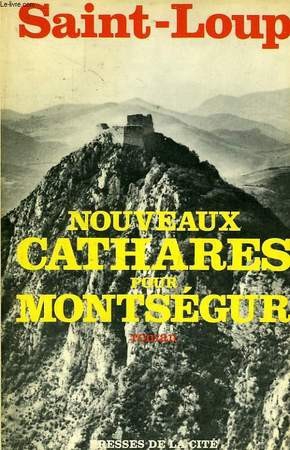 J’ai comme l’impression qu’on ne lit plus beaucoup Saint-Loup (nom de plume de Marc Augier) aujourd’hui, ce que je ne peux que déplorer. Aussi, si ces quelques considérations sur l’un de ses ouvrages phares pouvaient donner à d’aucuns l’envie de se plonger dans l’œuvre de ce grand écrivain, j’en serais ravi.
J’ai comme l’impression qu’on ne lit plus beaucoup Saint-Loup (nom de plume de Marc Augier) aujourd’hui, ce que je ne peux que déplorer. Aussi, si ces quelques considérations sur l’un de ses ouvrages phares pouvaient donner à d’aucuns l’envie de se plonger dans l’œuvre de ce grand écrivain, j’en serais ravi.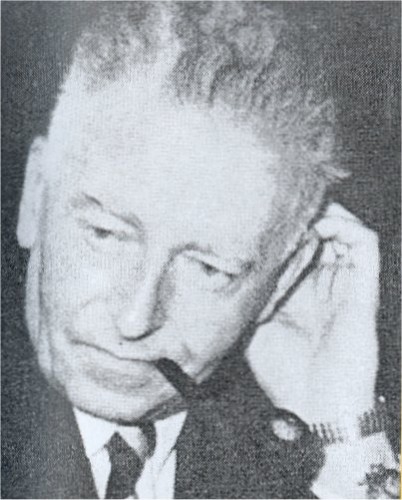 Au-delà de la question identitaire, Nouveaux cathares pour Monségur est un voyage en Occitanie, dans ses châteaux, ses montagnes, ses légendes. C’est l’occasion aussi pour Saint-Loup de traiter de religion et en particulier du catharisme. Cette foi est ainsi celle de ce mystique personnage qu’est Auda Isarn (dont le nom a été repris par une célèbre maison d’édition). Membre de la bande d’amis de Roger Barbaïra, sa beauté froide la rend désirable à bien des hommes qui s’opposeront pour l’avoir mais une telle femme, dotée d’une telle foi, peut-elle réellement appartenir à un homme et lui dévouer sa vie? Auda Isarn fait partie de ces femmes un peu mystérieuses voire insaisissables que l’on retrouve dans l’œuvre de l’auteur, telle la fameuse Morigane de Plus de pardons pour les Bretons, et est résolument le personnage le plus énigmatique de l’histoire.
Au-delà de la question identitaire, Nouveaux cathares pour Monségur est un voyage en Occitanie, dans ses châteaux, ses montagnes, ses légendes. C’est l’occasion aussi pour Saint-Loup de traiter de religion et en particulier du catharisme. Cette foi est ainsi celle de ce mystique personnage qu’est Auda Isarn (dont le nom a été repris par une célèbre maison d’édition). Membre de la bande d’amis de Roger Barbaïra, sa beauté froide la rend désirable à bien des hommes qui s’opposeront pour l’avoir mais une telle femme, dotée d’une telle foi, peut-elle réellement appartenir à un homme et lui dévouer sa vie? Auda Isarn fait partie de ces femmes un peu mystérieuses voire insaisissables que l’on retrouve dans l’œuvre de l’auteur, telle la fameuse Morigane de Plus de pardons pour les Bretons, et est résolument le personnage le plus énigmatique de l’histoire.


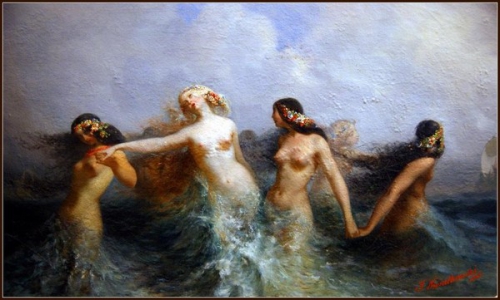
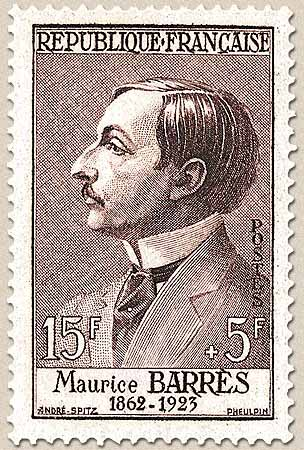 This lie is manifestly not sustainable for French literature, where engagement in politics was as common on the right as on the left. The names of Maurice Barrès and Charles Maurras will certainly live for so long as there is a French nation. Both attained the highest levels of literary aesthetic, though neither is nor should be immune from criticism. Maurice Barrès’s desire to see his native Lorraine returned to France led him to impassioned public support of the bloodshed of the First World War that won him the terrible sobriquet of le rossignol des carnages (the nightingale of carnage), and was not an advert for nationalism, while Maurras wished to see an end to the Republic, but failed to provide decisive leadership at a crucial moment in February 1934, when the conjunction of political circumstances was favourable to his wishes, so demonstrating that he was not the man of destiny that his followers thought him.
This lie is manifestly not sustainable for French literature, where engagement in politics was as common on the right as on the left. The names of Maurice Barrès and Charles Maurras will certainly live for so long as there is a French nation. Both attained the highest levels of literary aesthetic, though neither is nor should be immune from criticism. Maurice Barrès’s desire to see his native Lorraine returned to France led him to impassioned public support of the bloodshed of the First World War that won him the terrible sobriquet of le rossignol des carnages (the nightingale of carnage), and was not an advert for nationalism, while Maurras wished to see an end to the Republic, but failed to provide decisive leadership at a crucial moment in February 1934, when the conjunction of political circumstances was favourable to his wishes, so demonstrating that he was not the man of destiny that his followers thought him. 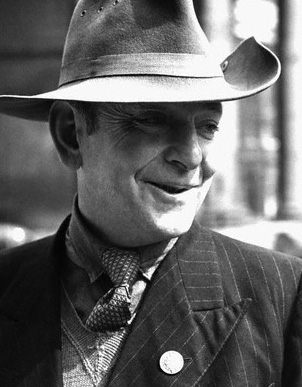 While undoubtedly the Republican side in the Spanish Civil War attracted more writers and artists than did the cause of national Spain, there were some notable supporters of the Francoist cause. Unsurprisingly Ezra Pound was parti pris on the right side. Pound merits a whole talk of his own and I will not attempt the hopeless task of precising his life and work in the time available to me this afternoon. I will however mention Roy Campbell.
While undoubtedly the Republican side in the Spanish Civil War attracted more writers and artists than did the cause of national Spain, there were some notable supporters of the Francoist cause. Unsurprisingly Ezra Pound was parti pris on the right side. Pound merits a whole talk of his own and I will not attempt the hopeless task of precising his life and work in the time available to me this afternoon. I will however mention Roy Campbell.  Henry Williamson was another author who was deeply politically engaged in the most controversial way, but whose reputation has been somewhat sanitised by excessive focus on his nature writing, especially his great success, Tarka the Otter, rather than his deeply political and semi-autobiographical cycle of novels A Chronicle of Ancient Sunlight. It tells the story of his South London boyhood, his experiences at the front in the First World War veteran, and his progressive evolution into that apparent contradiction in terms, a pacifiist and a fascist, and his complex relationship with Sir Oswald Mosley, an idealised version of whom appears as Sir Hereward Birkin, the leader of the Imperial Socialist Party, based on the British Union of Fascists.
Henry Williamson was another author who was deeply politically engaged in the most controversial way, but whose reputation has been somewhat sanitised by excessive focus on his nature writing, especially his great success, Tarka the Otter, rather than his deeply political and semi-autobiographical cycle of novels A Chronicle of Ancient Sunlight. It tells the story of his South London boyhood, his experiences at the front in the First World War veteran, and his progressive evolution into that apparent contradiction in terms, a pacifiist and a fascist, and his complex relationship with Sir Oswald Mosley, an idealised version of whom appears as Sir Hereward Birkin, the leader of the Imperial Socialist Party, based on the British Union of Fascists.